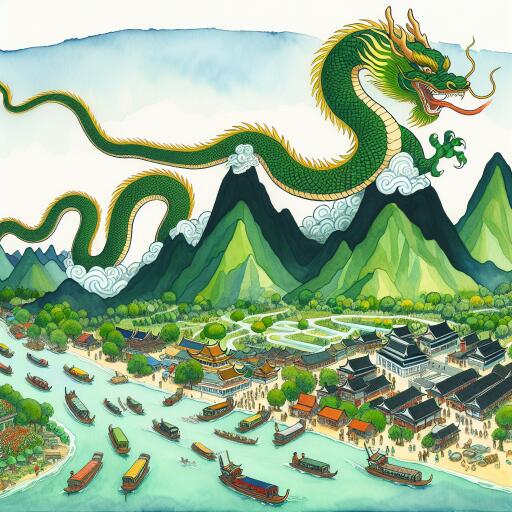
China In The Mekong: The Evolving Dragon – Analysis
The Mekong River is a vital artery for more than 65 million people across six Southeast Asian nations: China, Myanmar, Thailand, Laos, Cambodia, and Vietnam. Its abundant biodiversity and fertile lands significantly influence the region’s food security and economic dynamics, particularly in agriculture, trade, connectivity, tourism, and hydropower production.
Originating from China, the Mekong provides the country with considerable influence over the river and its resources. This influence is of paramount importance for the downstream countries concerned with food, water, energy, and economic security. As the global climate landscape evolves and geopolitics shift, understanding China’s role within the Mekong Basin becomes increasingly vital.
Sustainable development of this crucial transboundary water source is necessary, but regional cooperation and integrated management remain surprisingly limited. Post-World War II efforts saw Thailand, Vietnam, Laos, and Cambodia collaborate, culminating in the creation of the United Nations-backed Mekong Committee in 1957, which evolved into the Mekong River Commission (MRC) in 1995.
The MRC was aimed at coordinating sustainable development and conservation alongside data dissemination across the basin. Yet, without China’s active involvement, these efforts fall short, especially given China’s upstream dominance. Even as a dialogue partner with the MRC, China’s engagement has been restrained, limiting MRC’s capacity to manage the rapid industrialization affecting the Mekong’s ecology.
Since 2002, China only provided flood season data (June-October) regarding water levels and rainfall, constraining accurate drought and flood model development for the basin. However, it was in 2020 that China began sharing year-round hydrological data.
Capitalizing on the river’s hydroelectric potential and its strategic upstream location, China, since the early 1990s, embarked on an aggressive campaign to construct multiple dams. The country now hosts eleven main stream dams and over 95 tributary dams on its territory.
China’s approach focusses on two primary axes: asserting territorial rights for Mekong’s utilization within its borders and embracing a modernist developmental paradigm aimed at economic growth and infrastructure expansion to manage transboundary waters.
Nonetheless, this unchecked development exacerbates ecological damage. China’s dams have reshaped the river’s flow, seasonal volume and caused significant climate variations, sparking accusations of China deliberately retaining water, thus impacting downstream food security and triggering droughts. China rebuffs these claims, asserting the dams are primarily for flood control.
The environmental disruptions have not deterred China’s “dam building boom,” fueled by domestic resource demands, the Belt and Road Initiative, and intensifying regional trade and investments. Under China’s “Going Out” policy—which encourages external investment and control over resources abroad—state banks and enterprises have been instrumental in promoting dam projects throughout the lower Mekong Basin.
In 2016, the Lancang-Mekong Cooperation (LMC) initiative was introduced, marking a cooperative shift in China’s Mekong approach. This framework aimed to bolster political, economic, and socio-cultural connections within the basin, emphasizing connectivity, production, cross-border cooperation, and poverty alleviation—a step welcomed by some as indicative of “win-win cooperation.”
However, skepticism lingers as several Chinese-funded hydroelectric endeavors in the lower basin have fallen short, potentially reinforcing suspicions of “debt trap” diplomacy. Incidents such as dam breaches in Laos, inadequate relocation compensation in Cambodia, and unproductive developments in Thailand illustrate the mixed impacts of China-backed projects.
China’s Mekong engagement remains complex. While leading and facilitating dialogues among co-riparian states and bridging the regulatory gaps left by the MRC through the LMC, the larger implications challenge regional security and ecological stability. In an era marked by growing climate crises, China’s traditional development trajectory faces scrutiny against the backdrop of environmental sustainability. The implications urge Mekong nations to weigh developmental benefits against environmental costs. Cambodia has already halted new mainstream Mekong dams, and Myanmar’s activists have successfully opposed the Myitsone Dam. Such actions reflect growing concerns about the “win-win” narrative China espouses in the Mekong.





Leave a Reply